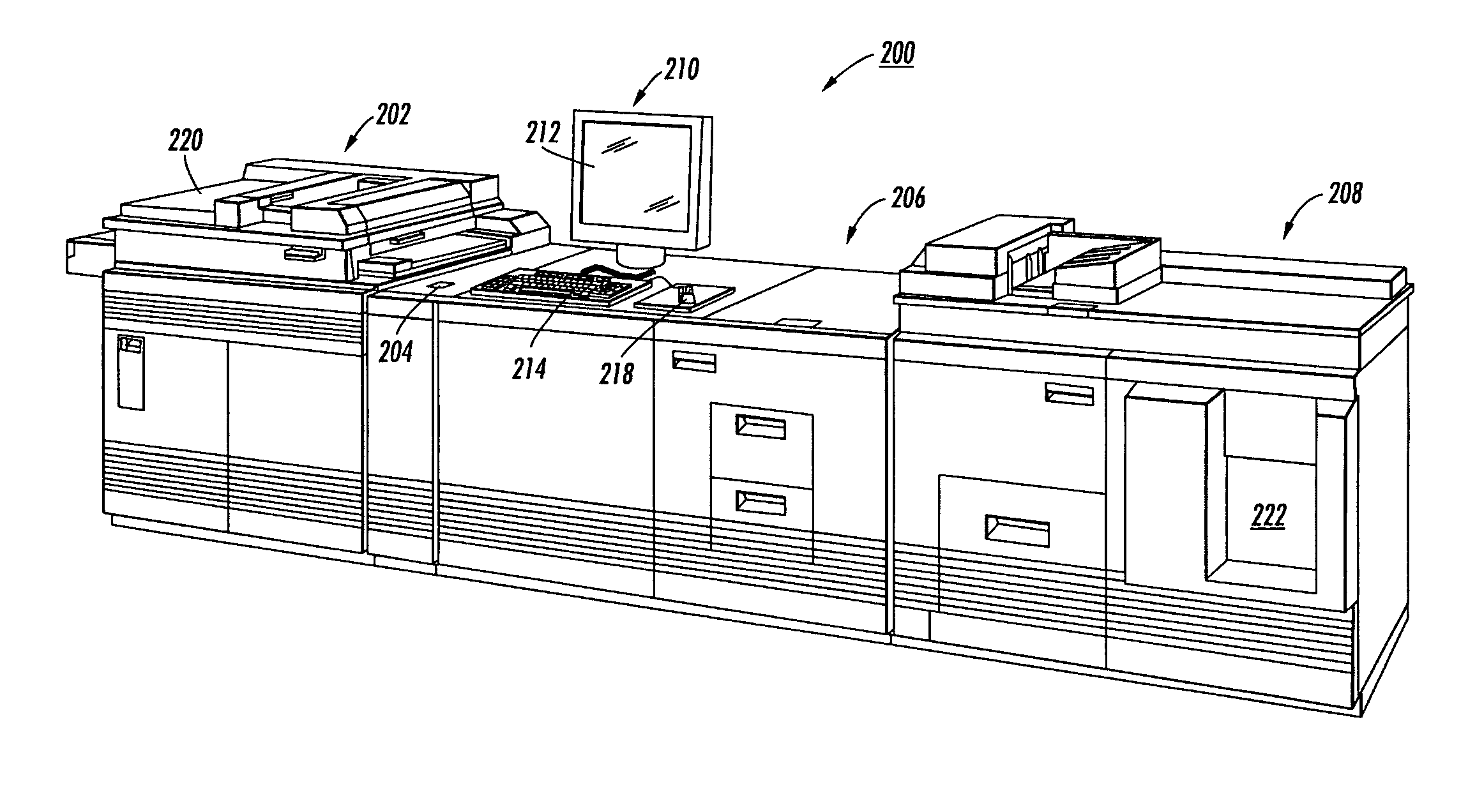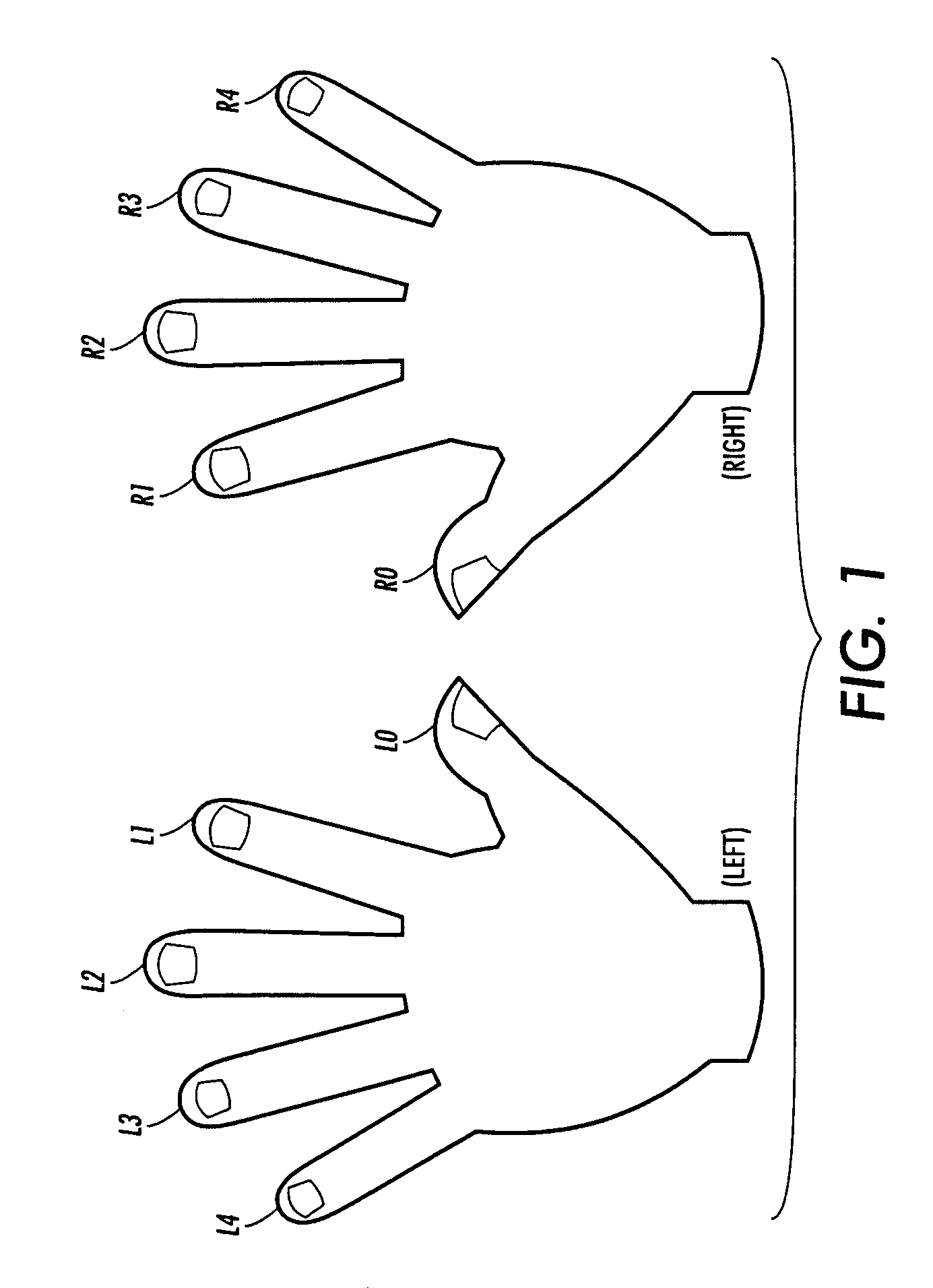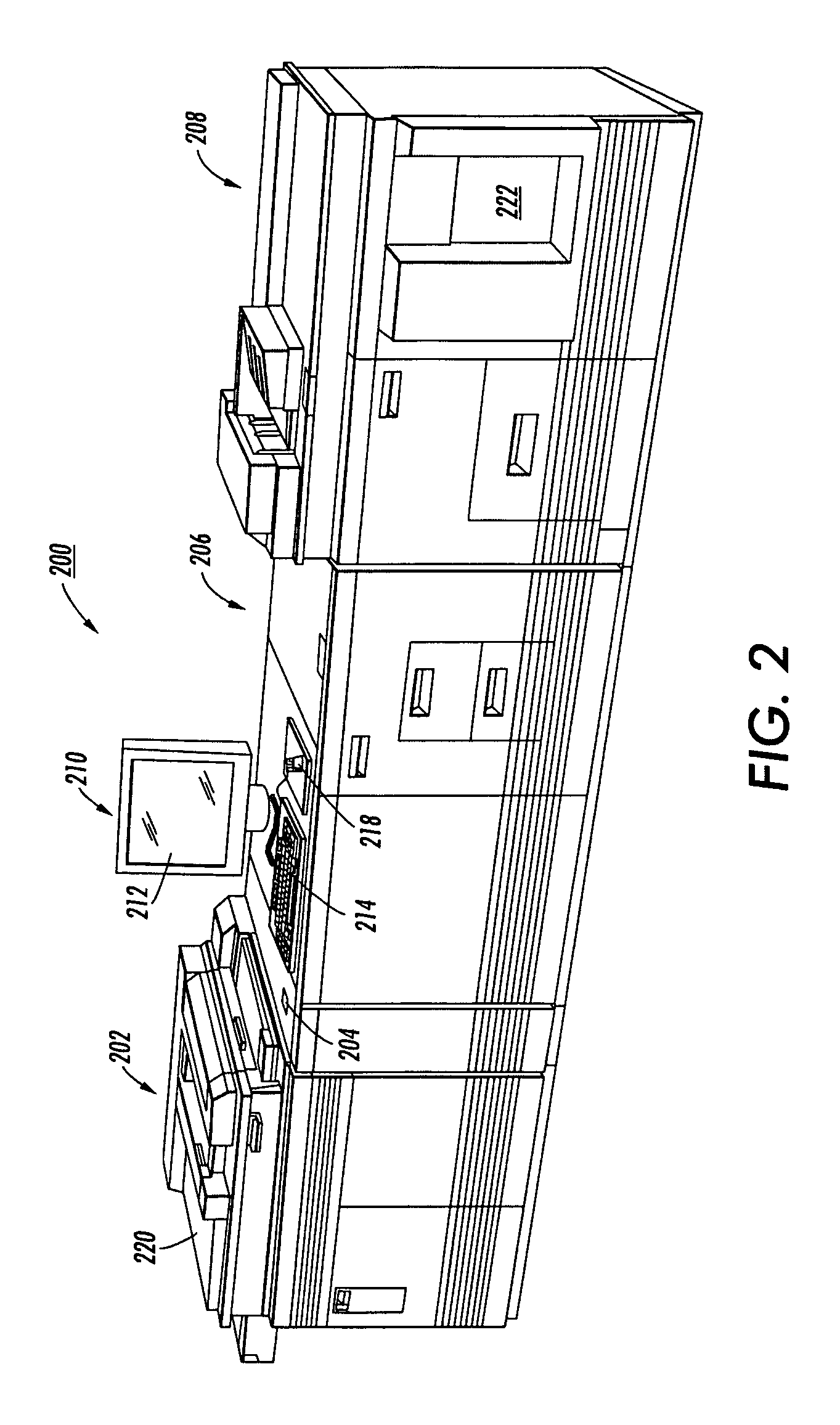Fingerprint scan order sequence to configure a print system device
a printing system and order sequence technology, applied in the field of fingerprint scan order sequence to configure a print system device, can solve the problems of time-consuming manual entry of complex settings, large number of jobs desired to be performed in a single day, and large number of jobs desired to be performed in a single day, and achieve the effect of quick and easy configuration and simple swiping of the user's fingers
- Summary
- Abstract
- Description
- Claims
- Application Information
AI Technical Summary
Benefits of technology
Problems solved by technology
Method used
Image
Examples
Embodiment Construction
[0022]What is disclosed herein is a novel system and method for capturing fingerprint data in an ordered sequence and using the captured sequence to configure a complex multi-function print system device to a set of device specific settings. Through an implementation hereof, a complex print device can be quickly and easily configured to set of custom settings and desired workflows through a series of fingerprint scans performed in a predefined ordered sequence.
[0023]It should be understood that one of ordinary skill in this art would be readily familiar with many facets of print systems common to print / copy job environments and device specific settings common to those print system. One of ordinary skill would also be knowledgeable about computer science, databases, and software and programming systems and methods sufficient to implement the functionality and capabilities described herein in their own print system device environments without undue experimentation.
[0024]The set of com...
PUM
 Login to View More
Login to View More Abstract
Description
Claims
Application Information
 Login to View More
Login to View More - R&D
- Intellectual Property
- Life Sciences
- Materials
- Tech Scout
- Unparalleled Data Quality
- Higher Quality Content
- 60% Fewer Hallucinations
Browse by: Latest US Patents, China's latest patents, Technical Efficacy Thesaurus, Application Domain, Technology Topic, Popular Technical Reports.
© 2025 PatSnap. All rights reserved.Legal|Privacy policy|Modern Slavery Act Transparency Statement|Sitemap|About US| Contact US: help@patsnap.com



